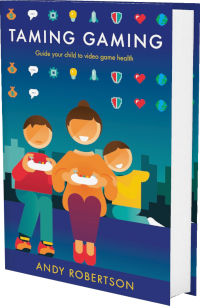 Android
Android iOS
iOS Mac
Mac Switch
Switch Wii
Wii Wii U
Wii U PC
PC PS4
PS4 PS5
PS5 Xbox One
Xbox One Xbox X|S
Xbox X|SWe've documented 42 accessibility features for Star Wars Jedi: Survivor, including Fully Voiced (Or No Speech), Environmental Captions, Large Subtitles, Adjust Speed and Low Pressure. Its accessibility is strongest in Controls and Getting Started but it also has features in Visual, Reading, Navigation, Audio and Difficulty to reduce unintended barriers.
This report is created with input from accessibility experts and the player community to help people find games that have the accessibility features they require. Once you have found potential games on the database, there are excellent specialist accessibility sites that offer in-depth reviews to guide your purchasing decisions.
Our accessibility examiner, Jo Robertson, first checked Star Wars Jedi: Survivor accessibility a year ago. It was re-examined by Ben Kendall and updated 3 months ago.
 Accessibility Notes
Accessibility Notes
You can add a shortcut menu which can provide directional audio pings to indicate the direction to go in, provide a hint, and enter slow mode.
In addition to the standard difficulty settings, you can customise certain aspects, such as fall damage. You can enable hints in certain sections, although sometimes what you need to do or where you need to go can be unclear. You can make the camera automatically rotate around you. You can turn on slow motion mode and adjust the speed at which the game runs in this mode - not only that but you can customise this to only happen during combat or other pressure moments. You can only save the game at meditation points which can be few and far between. While you can typically change the difficulty whenever you want, if you're currently fighting enemies, the setting is locked until you run away, defeat them, or are killed. This article and video from SpecialEffect details all the motor accessibility features.
Shortcut Controls replaces the map button with a menu that brings up several features including the map and accessibility features otherwise available in the menu, such as sow mode, allowing you to activate them more easily.
Text is small but is generally high in contrast. Subtitles can be made large. The map shows all the available routes, as well as your objective. Sometimes, the way forward, although clearly shown on the map, can be hard to identify in the actual game environment. However, this can be alleviated through a high contrast mode, which makes the environment black and white and lets you choose a different vibrant colour for yourself, enemies, interactive objects, and more, dramatically and universally increasing the game's contrast and legibility.
Navigation through the game's areas can occasionally be tricky due to the environmental puzzles blocking your way, despite a useful map that can be used to see interactive objects and different paths, both available and blocked, as well as your objective. You can make an objective marker appear in your binoculars, but this merely shows the overall direction you need to move in and not the direction of the path you need to take, so it isn't particularly useful. There is a navigational assist audio cue that acts as a sonar to keep you headed in the right direction, although this can sometimes lead you in the wrong direction, similar to the binocular objective marker.
 Game Details
Game Details
Release Date: 28/04/2023
Out Now: PC, PS5 and Xbox X|S
Skill Rating: 12+ year-olds
Players: 1
Genres: Action, Adventure, Fighting, Traversal (Narrative, Platform and Shooting)
Accessibility: 42 features
Components: 3D Third-Person
Costs: Purchase cost, In-Game Purchases and In-Game Pass
 Controls
Controls
We've documented 10 accessibility features for Controls in Star Wars Jedi: Survivor which deal with how you control the game, different options for alternative inputs and whether you can remap these settings to suit your needs.
Gamepad
Can play with the following:
Multiple Buttons & Two Sticks: Can play with multiple buttons and two sticks.
Mouse And Keyboard
Can play with the following:
Mouse and Keys: Can play with mouse and multiple keys.
Remap Controls
Can customise the controls for the game as follows:
Remap Buttons: Can re-map all buttons so that you can use alternatives that better suit your play.
Remap Mouse and Keyboard: Can remap mouse and keyboard key bindings, on systems that support these controls.
Remap Extra Mouse Buttons: Can remap additional buttons on mice that provide more than the two standard buttons, on systems that support these controls.
Invert X/Y Axis: Can invert the direction required to control looking and aiming. This enables you to match your instinctive orientation when looking.
Button Combinations
Specific button operation required to play
Rapid Repeated Pressing Optional: Quick, repeated button pressing (more than 2 times a second) is not required, can be skipped or switched to holding a button to trigger a repeated action.
Controller Vibration
Vibration Optional: Controller vibration not used in the game or you can disable it.
Informative Vibration: Controller vibration indicates events or interactions in the game, echoing visual and audio cues. This can provide additional information about progress, approaching enemies or hitting a target.
Sensitivity
You can adjust
Adjust Mouse/Stick/Touch Sensitivity: Adjust how sensitive touch/mouse/stick controls are.
Similar Games With More Accessibility Features for Controls
If you want to play Star Wars Jedi: Survivor, but it doesn't offer the Controls accessibility features you require, these similar games extend the Controls accessibility:
- Criminals Within (13 Controls Features)
- Immortals Fenyx Rising (13 Controls Features)
 Difficulty
Difficulty
We've documented 3 accessibility features for Difficulty in Star Wars Jedi: Survivor which deal with how you can adjust the challenge of play, and whether this is locked once chosen or can be adjusted as you play.
Difficulty Options
Select Difficulty: Select the level of difficulty from a range of presets. This not only offers a way to adjust the challenge of a game but enables you to do so without dealing with individual criteria.
Customise Difficulty: Customise different aspects of the game to create a challenge of an appropriate level. Adjusting elements individually enables you to tailor gameplay to suit your needs and style of play.
Adjust After Setting
Adjustable Between Levels: You can adjust the difficulty between levels/rounds. Although you have to restart your checkpoint or level, this enables you to adjust the difficulty after selecting it at the beginning of the game.
 Getting Started
Getting Started
We've documented 7 accessibility features for Getting Started in Star Wars Jedi: Survivor which deal with what support is offered to get started with the game. This includes customising the experience when you first open the game via any onboarding processes it provides as well as tutorials and other assistance when you first start playing.
Assistance Getting Starting
These features aid your play of the game in terms of cognitive load on learning controls, dealing with pressure and coping with the environment and challenges.
Tutorials: There are helpful tutorials and instructions on how to play. Information is provided in a timely manner, with appropriate level of detail.
Practice Area: You can practice freely without opponents or time pressures. This can be a specific practice option, or the ability to play levels with the easiest opponents to improve understanding and skill.
Assistance With Controls: The game can automatically assist with aiming, steering, reloading, jumping, running etc. This reduces the challenge of certain aspects of play to remove barriers and make control of characters more accessible.
Low Pressure: Game tasks aren't time-limited or there's a low-pressure mode. This avoids the pressure of being put on the clock for overarching missions, or failing tasks because you didn't reach a destination in time.
Adjust Speed: Adjust the speed of the game at critical moments or throughout, or rewind play for a second attempt, to ease reaction times. By slowing the game, you have more time to interpret what is happening and then execute your actions. It also reduces the pressure on getting things right quickly or the first time you attempt them.
Assistance For Progressing
These features aid your progress through the game offering different ways of maintaining your progression.
Assisted Progress With Hints: The game notices if you get stuck (or you can press a button) and provides information to help you progress. This can offer hints or tutorials popping up during play. This includes hints after you have died, where it can suggest strategies or difficulty settings to adjust or offer to skip past problematic levels.
Assisted Recall for Narrative and Dialogue: The game enables you to review the history of conversations or provides highlights of the information you gather in a form you can review.
Similar Games With More Accessibility Features for Getting Started
If you want to play Star Wars Jedi: Survivor, but it doesn't offer the Getting Started accessibility features you require, these similar games extend the Getting Started accessibility:
- Criminals Within (8 Getting Started Features)
- Immortals Fenyx Rising (8 Getting Started Features)
 Reading
Reading
We've documented 6 accessibility features for Reading in Star Wars Jedi: Survivor which deal with how much reading or listening comprehension is required, how well the game provides visual and audible access to the text and whether subtitles and captions are a good fit for purpose.
Reading Level
How much reading is required to play the game's main path or story and how complex the language is. The presence of voiced characters doesn't reduce this requirement, as it's recorded as a separate datapoint.
Simple Minimal Reading: Minimal reading is required. The quantity and complexity of reading are at a level that a primary/elementary student (9-year-old) could understand.
Text Visibility
High Contrast Text: Text colour contrasts to the background or can be adjusted to be. The text in menus, instructions and other information is presented in high contrast with a solid background.
Subtitles
Large Clear Subtitles: Subtitles are large, clear and of good contrast. They are at least 1/20 (46 pixels on 1080 screen) the height of a landscape screen and at least 1/40 height on portrait screens, or can be adjusted to be. We base this on the full line-height, including the space above and below the letters. Considered separately from the general text of the game, the subtitles are large, clear and of good contrast.
All Speech Subtitled (Or No Speech In Game): All spoken content has subtitles, or there is no speech in the game. This means there is no requirement to hear spoken dialogue or narrative to play the game.
Captions
Speaker Indicator, their Tone and Environment Sounds: Captions indicate who is speaking (or there is only ever one person speaking) and their tone, game sound and music. This can also be indicated visually in the game with character icons or character expressions with text in speech bubbles next to the person speaking. Environmental sounds are provided as extra text within the subtitles.
Voice Acted
All Dialogue is Voice Acted (Or No Speech In Game): All of the game dialogue and narrative can be voiced, or there is no speech in the game. This means there is no requirement to read the dialogue and narrative text to play the game.
Similar Games With More Accessibility Features for Reading
If you want to play Star Wars Jedi: Survivor, but it doesn't offer the Reading accessibility features you require, this similar game extends the Reading accessibility:
- Knack (7 Reading Features)
 Navigation
Navigation
We've documented 6 accessibility features for Navigation in Star Wars Jedi: Survivor which deal with how the game provides guidance and assistance to navigate its worlds. These are only for games that have traversal and exploration in 2D and 3D spaces.
Clarity
Large Clear Navigation: The in-game navigation and maps are clear to read. They offer large text and offer markers that are large and of high contrast. Where text or information is small, there are settings to zoom-in and increase visibility.
Clear Mission Objectives: The game provides clear, structured missions with directional guidance and advice on which can be attempted next. This also indicates (ideally on maps where they are provided) which missions can't be attempted because you do not have the appropriate items yet.
Head-Up Display
Adjust Head-Up Display: Resize and adjust the content of the head-up display. This enables it to be made more visible. It can also enable the removal of too much information that can be distracting or confusing.
Game Map: View a map of the game world during play, with the landscape, points of interest and missions highlighted throughout the entire game. This enables the orientation of the player and the world, confirming a direction of movement and the location of destinations or points of exploration.
Menu Navigation
Menu Audio Cues: Navigating menus provide an audio cue for each selection.
Digital Menu Navigation: Menu choices with Gamepad can be made without using an analogue stick to guide a cursor to a selection. For example, using D-Pad, buttons or the Stick to change menu selection in a single action.
Similar Games With More Accessibility Features for Navigation
If you want to play Star Wars Jedi: Survivor, but it doesn't offer the Navigation accessibility features you require, these similar games extend the Navigation accessibility:
- Marvel's Spider-Man 2 (9 Navigation Features)
- Lego Star Wars: The Skywalker Saga (8 Navigation Features)
- Star Wars: The Old Republic (8 Navigation Features)
- Marvel's Spider-Man (8 Navigation Features)
 Visual
Visual
We've documented 7 accessibility features for Visual in Star Wars Jedi: Survivor which deal with how you can adjust the visuals to suit your needs, and offer additional information if you can't hear the game.
Contrast
High Contrast: There is high contrast between elements that need to be distinguished from each other, such as characters, interactive objects and game environment, either by default or a high contrast mode. This is different to a slider that increases contrast or brightness between light and dark.
Interactive Elements
Outline Interactive Elements: Characters, platforms and enemies can be outlined or highlighted for visibility. This can be with a large border around the character or a special visual mode that adjust the colour to make characters more visible.
Visual Distractions
No Screen Shake: No screen shake effect or it is included but it can be disabled. This includes the absence of screen shake for dramatic effect as well as to indicate hits on a target.
Audio Cues for Visual Events
Audio Cues for Visual Events: Audio is provided to indicate visual events. Game events or progress highlighted by visual icons, effects or animations are also accompanied by audio to signify that progress. This is useful for blind players.
Menu Audio Cues: Navigating menus provide an audio cue for each selection.
Motion Sickness Friendly
Motion Sickness Friendly: Doesn't have 3D movement elements that may trigger motion sickness, like motion blur, depth of field and field-of-vision. Or includes the ability to disable motion blur, depth of field and field-of-vision effects.
Colour Options
Colour Adjustments: Adjust colours of characters or game elements for greater visibility. Includes the ability to select which type of colour blind mode you require.
 Audio
Audio
We've documented 4 accessibility features for Audio in Star Wars Jedi: Survivor which deal with how you can adjust the audio of the game and whether audio cues compensate for aspects of the game that are hard to see.
Adjustable Audio
Balance Audio Levels: Set music and game sound effects separately. This enables you to select your preference as well as ensure critical game sounds aren't obscured by other audio.
Audio Events
Visual Cues for Audio Events: Text or other visual indicators of audio events. This mirrors audio indicators of progress in the game with a corresponding visual indication.
Visual Depiction of Directional Audio: Indication on-screen with arrows, icons, located colour splashes and the like, to show where directional audio for damage, footsteps, environmental or way-finding sounds are coming from.
Play Without Hearing
Play Without Hearing: No audio cues are necessary to play the game well.
System Accessibility Settings
In addition to the accessibility features provided in the game, you can also use system-wide accessibility settings:
PC
Windows has extensive accessibility features. Some, like colour correction, work with games. Lots of accessibility software can be used with PC games, from voice recognition to input device emulators.
PlayStation 5
PlayStation 5 has a range of system-wide accessibility settings.
Xbox Series X|S
Xbox One has a system features, the excellent co-pilot share controls mode and adaptive controller support for all games.
Read more about system accessibility settings.
Accessibility Report supported by VSC Rating Board, PlayabilityInitiative and accessibility contributors Jo Robertson and Ben Kendall












